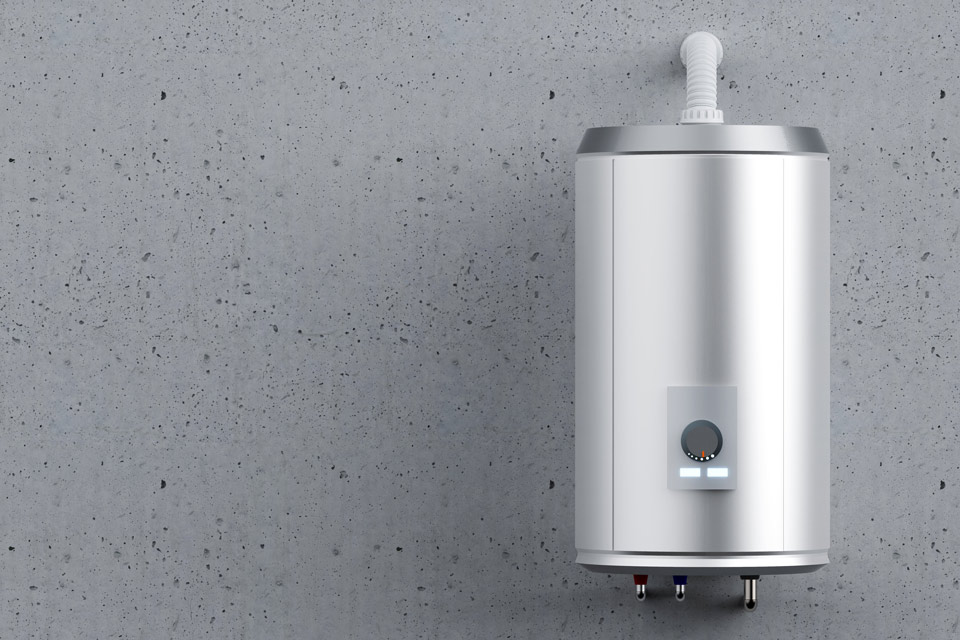When investing in a new water heater, you now have the choice to replace a traditional tank water heater with a tankless water heater. But should you? Simons Heating & Cooling can explain these options and ensure every Upstate New York homeowner makes the best choice for their needs and budget.
What Is a Tankless Water Heater?
A tankless water heater, also known as a demand-type water heater, is a type of water heater that heats water on demand without the use of a storage tank. Tankless water heaters warm up the water as it passes through a heat exchanger, providing hot water instantly when needed. They are more energy efficient than traditional water heaters, as they don’t require a storage tank and are able to provide hot water on demand. According to the U.S. Department of Energy, a typical Upstate New York homeowner can anticipate an 8–34 percent savings in energy use each day versus a traditional tank water heater.
Among the most popular brands for a tankless water heater are Bosch, Rinnai, EcoSmart, Rheem, Stiebel Eltron and Eemax.
What’s the Difference Between a Tank and Tankless Water Heater?
The main difference between a tank and tankless water heater is the way in which they heat and store water. Tank water heaters use a storage tank to heat and store large amounts of water, while tankless water heaters heat water on-demand as it passes through the heat exchanger. Tankless water heaters are more energy efficient than tank water heaters, as they don’t require a storage tank and can provide hot water on-demand.
From a cost standpoint, the up-front cost of purchase and installation of a tankless water heater versus its traditional counterpart is significant. According to Forbes Home, on average the cost of a traditional tank water heater (the actual product) is $300 to $2,000, and the cost of labor to remove the old tank and install the new one averages between $800 to $1,700.
On the tankless water heater side, the average cost of the product is $1,000 to $2,500, with an additional $1,500 to $2,000 for installation. So, as you can see, the up-front expense for a tankless water heater is considerably more, but if you plan to stay in your home long enough, the savings gained via lower utility bills can offset that difference.
What Are the Pros and Cons of Tankless Water Heaters?
Some of the advantages (pros) of a tankless water heater include, but not limited to the following:
- Higher rate of energy efficiency than gas or LP, which means you will save more money on your utility bills month-over-month.
- Unlimited supply of hot water because it is heated as you need it rather than being stored and heated regularly in a tank waiting to be used.
- Less space required, because the average size of this wall-mounted product is only 10-inches long by 7-inches wide.
- Lower risk of leaks and water damage, simply because there is no water being drawn in and waiting to be used.
- Zero risk of tank exploding and, thus, a lower risk of burns or exposure to toxic metals
- Life expectancy of more than 20 years, which is more than double the number of years of a tank water heater.
On the opposite side (the cons), a tankless water heater has a few disadvantages to consider, such as:
- Higher upfront cost of the unit and installation; as explained previously, the unit itself is more expensive than a traditional tank, and the installation is a little more complex, thus the labor hours increase.
- Inconsistent water temperature when multiple outlets are in use. For example, if you are taking a shower, plus running the laundry machine and dishwasher all at the same time, it may be challenging for the tankless water heater to keep up and push enough water through to each source.
- No access to hot water during a power outage because the tankless water heater is powered by electricity.
What Are the Pros and Cons of Traditional Tank Water Heaters?
While they may appear old fashioned compared to a modern, tankless product, there are still advantages (pros) to using a traditional tank water heater, such as:
- Lower initial equipment and installation cost. Plus, the project is usually faster, so overall labor hours are less.
- Low venting cost, which is necessary from a safety standpoint because gas is typically used to heat the tank. The exhaust from that gas usage must be directed outside of the home.
However, on the negative side (the cons) of traditional tank water heaters, there are several thoughts to consider:
- Higher energy/utility costs each month – even if you set the temperature to a low setting, the tank is constantly heating to maintain the desired temperature, plus they require standby heat loss to keep the water at the pre-set thermostat setting.
- Limited amount of hot water available. It’s a tank and obviously a tank can only hold so much water. The standard size water heater tank holds 50 – 60 gallons of water, but there are some larger tanks that hold up to 80 gallons.
- Risk of water damage due to leaks. Typically, you’ll realize you need a new tank when one of two events happen – 1) hot water is not coming from your faucet or the temperature is lukewarm, or 2) you find your floor covered in water due to a leak. Neither scenario is ideal, and both require you to pay attention.
If you think or know that you need to replace your water heater, call Simons Heating & Cooling at 518-955-1051 or contact us online to receive a complimentary consultation and estimate. Whether you decide to try a tankless water heater or stick with a traditional tank water heater, Simons’ experts will be able to provide you with a product that satisfies your family’s hot water needs and your budget.


